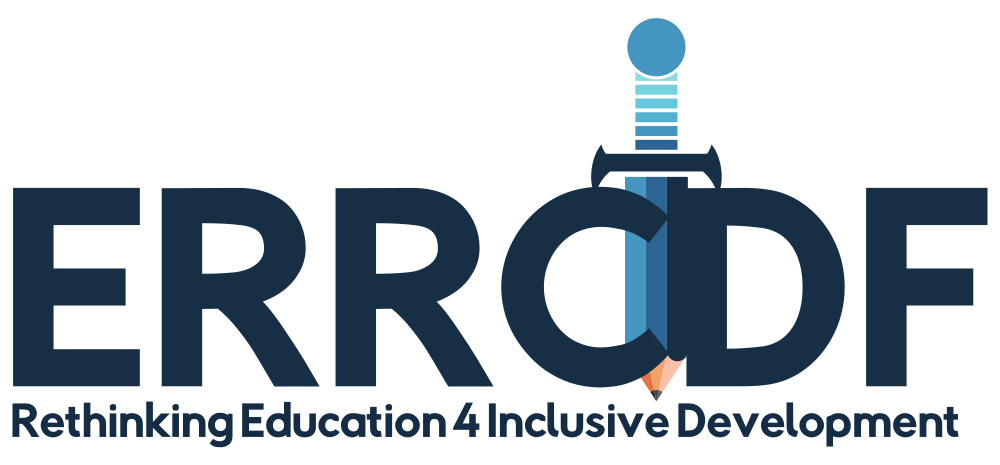Alcohol Consumption and its Socio-demographic Correlates among Secondary School Teachers in Uganda
DOI:
https://doi.org/10.51986/ijss-2021.vol1.001Keywords:
Alcohol consumption, Secondary school teachers, Correlation, Socio-demography, UgandaAbstract
Alcohol consumption among teachers is becoming an issue of concern in Uganda. Markedly, alcohol consumption among teachers varies by socio-demographic characteristics. This study establishes the relationship between socio-demographic characteristics and alcohol consumption among secondary school teachers in Greater Bushenyi of Uganda. The study employed a cross-sectional design with a quantitative method of data collection and analysis. Multistage sampling was employed, first stratified proportionate and then simple random sampling. The study sample consisted of 266 participants from 11 secondary schools. Data were collected using a self-administered questionnaire. Descriptive statistics and logistic regressions were the analytical strategies, using Stata 15.0 version. Significance was set at p = 0.05. The rate of alcohol consumption among teachers was 44.7%. Male teachers were more likely to consume alcohol as compared to females (AOR: 2.2, 95% CI: 1.22-3.80, p< .01). As compared to Muslim counterparts, teachers identifying with the Roman Catholic denomination were three times more likely to consume alcohol (AOR: 3.1, 95% CI: 0.98-9.10, p = 0.05). Relative to comparable populations of adults whose alcohol consumption rates were already known, alcohol consumption among particularly male and Roman Catholic teachers in greater was high. It is recommended that school-based interventions should focus on male teachers.
References
Babalola, E., Ighoroje, M., Awhangansi, S., & Ayilara, O. (2017). Psychosocial correlates of hazardous alcohol use among secondary school teachers in Southwestern Nigeria. International Journal of Clinical Psychiatry, 5(1), 16-23. https://doi.org/10.5923/j.ijcp.20170501.03
Bouchery, E. E., Harwood, H. J., Sacks, J. J., Simon, C. J., & Brewer, R. D. (2011). Economic costs of excessive alcohol consumption in the US, 2006. American journal of preventive medicine, 41(5), 516-524. https://doi.org/10.1016/j.amepre.2011.06.045
Braun, B., Weinland, C., Kornhuber, J., & Lenz, B. (2018). Religiosity, guilt, altruism and forgiveness in alcohol dependence: Results of a cross-sectional and prospective cohort study. Alcohol and Alcoholism, 53(4), 426-434. https://doi.org/10.1093/alcalc/agy026
Bush, D. M., & Lipari, R. N. (2016). Substance use and substance use disorder by industry. https://www.ncbi.nlm.nih.gov/books/NBK343542/
Diepeveen, S., Ling, T., Suhrcke, M., Roland, M., & Marteau, T. M. (2013). Public acceptability of government intervention to change health-related behaviours: a systematic review and narrative synthesis. BMC public health, 13(1), 1-11. https://doi.org/10.1186/1471-2458-13-756
Griswold, M. G., Fullman, N., Hawley, C., Arian, N., Zimsen, S. R., Tymeson, H. D., . . . Salama, J. S. (2018). Alcohol use and burden for 195 countries and territories, 1990–2016: a systematic analysis for the Global Burden of Disease Study 2016. The Lancet, 392(10152), 1015-1035. https://doi.org/10.1016/S0140-6736(18)31310-2
International Center for Alcohol Policies (ICAP). (2008). International Center for Alcohol Policies (ICAP) (pp. Access: https://cwhn.ca/en/node/43441). USA: Washington
Luczak, S. E., Prescott, C. A., Dalais, C., Raine, A., Venables, P. H., & Mednick, S. A. (2014). Religious factors associated with alcohol involvement: Results from the Mauritian Joint Child Health Project. Drug and alcohol dependence, 135, 37-44. https://psycnet.apa.org/doi/10.1016/j.drugalcdep.2013.10.028
Martin, C. (2021). The Work of the Holy Spirit in Jesus’ Life and Ministry. Regent University.
Meneses-Gaya, C. d., Zuardi, A. W., Loureiro, S. R., & Crippa, J. A. S. (2009). Alcohol Use Disorders Identification Test (AUDIT): An updated systematic review of psychometric properties. Psychology & Neuroscience, 2(1), 83-97. http://dx.doi.org/10.3922/j.psns.2009.1.12
Muhaise, H., & Kareeyo, M. (2017). Electronic Health Information Systems Critical Implementation Issues (E-HMIS): District Health Information Software Version. 2 in the Greater Bushenyi, Uganda. American Scientific Research Journal for Engineering, Technology, and Sciences (ASRJETS), 34(1), 205-212.
Odejide, O. A., & Ibadan, N. (2006). Alcohol policies in Africa. African Journal of Drug and Alcohol Studies, 5(1), 27-39.
Peer, N. (2017). There has been little progress in implementing comprehensive alcohol control strategies in Africa. The American journal of drug and alcohol abuse, 43(6), 631-635. https://doi.org/10.1080/00952990.2017.1316986
Rehm, J., Baliunas, D., Borges, G. L., Graham, K., Irving, H., Kehoe, T., . . . Poznyak, V. (2010). The relation between different dimensions of alcohol consumption and burden of disease: an overview. Addiction, 105(5), 817-843. https://doi.org/10.1111/j.1360-0443.2010.02899.x
Rukundo, A., & Magambo, J. (2013). Professional impotence: Impact of alcoholism on secondary school teachers in Uganda. The International Journal of Alcohol and Drug Research, 2(2), 69-74. https://doi.org/10.7895/ijadr.v2i2.104
Saunders, J. B., Aasland, O. G., Babor, T. F., De la Fuente, J. R., & Grant, M. (1993). Development of the alcohol use disorders identification test (AUDIT): WHO collaborative project on early detection of persons with harmful alcohol consumption?II. Addiction, 88(6), 791-804. https://doi.org/10.1111/j.1360-0443.1993.tb02093.x
Schwadel, P. (2019). Americans’ drinking habits vary by faith. Pew Research Center
SESEMAT Bushenyi Region. (2020). School remitances. Bushenyi: Education Department of Bushenyi.
Slade, S. (2020). What is the relationship between Catholics and alcohol? , from Accessed: https://www.americamagazine.org/faith/2020/01/07/what-relationship-between-catholics-and-alcohol
Ssebunnya, J., Kituyi, C., Nabanoba, J., Nakku, J., Bhana, A., & Kigozi, F. (2020). Social acceptance of alcohol use in Uganda. BMC psychiatry, 20(1), 1-7. https://doi.org/10.1186/s12888-020-2471-2
Sturm, R., An, R., Maroba, J., & Patel, D. (2013). The effects of obesity, smoking, and excessive alcohol intake on healthcare expenditure in a comprehensive medical scheme. South African Medical Journal, 103(11), 840-844. http://dx.doi.org/10.7196%2FSAMJ.7260
Watts, W. D., & Short, A. P. (1990). Teacher drug use: A response to occupational stress. Journal of drug education, 20(1), 47-65. https://doi.org/10.2190/xww0-7fbh-fxvb-2k3c
World Health Organization. (2014). Management of Substance Abuse Unit. Global status report on alcohol and health, 2014. World Health Organization.
World Health Organization. (2019). Global status report on alcohol and health 2018: World Health Organization.
Downloads
Published
How to Cite
Issue
Section
License
Copyright (c) 2021 Athanansio Bashaija, Dennis Zami Atibuni, Aloysius Rukundo

This work is licensed under a Creative Commons Attribution-NonCommercial-NoDerivatives 4.0 International License.










